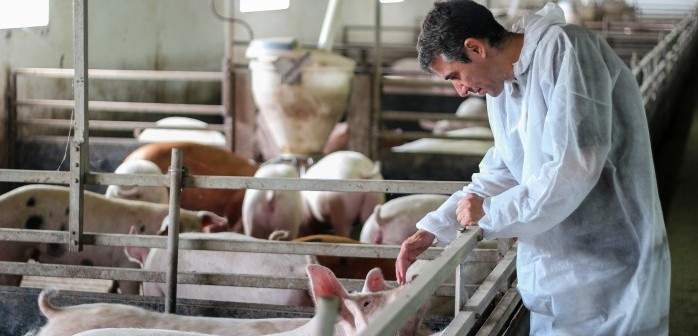Annie Davis, one of a team of seven pig vets for George Veterinary Group, based in Malmesbury, Wiltshire, discusses the difficulties for veterinary world under COVID-19 restrictions.
Spring is usually busy in the veterinary world. Our colleagues in farm practice are busy lambing and calving and we are caught up in the expected upturn in respiratory disease and seasonal blips in S.suis.
Our clinical practice has not been as dramatically affected as other professions. We have managed, in most cases, to perform visits sufficiently distant with additional PPE. Where this has not been possible then remote visits for auditing purposes have usually sufficed.
When it comes to clinical problems on farm, remote consultations have not been as straightforward. We have had producers performing post mortem examinations over video call, with stage directions communicated down the line (‘just shift that bit to one side – oooh, cut into that please…’). In simple cases this has been diagnostic and we have been able to address the issues remotely.
There have been many cases where our presence remotely has not been as satisfactory. In the same way that remote meetings lack the additional information we can gather from in-person interaction, body language and tone of voice; not being physically present and restricted to 2D images also hinders.
The lack of touch and smell are particularly noticeable. Additionally, where we have signs that may be ascribed to several pathogenic causes, or where there may be several different causes contributing, this approach does not work well.
Losing the context of seeing the pigs in situ, along with assessing all the aspects of their environment and behaviour in person removes the supporting evidence that we take for granted during clinical inspections.
Our secondary diagnostic tools are also limited when we are remote. There have been recent cases where respiratory disease has presented with post mortem signs that could be APP or Glassers disease, Erysipelas or S.suis.
Deciding on the course of treatment to prescribe may depend on blood samples, bacteriology swabs and culture or taking sections for microscopic examination.
In acute cases treatment may be started using the best fit (often relying on gut instinct too) with the results of these investigations either confirming the course of action or requiring its modification.
All things considered, while remote consultations have been necessary and generally adequate in our unusual circumstances, I am convinced that they do not give us the full picture and I will welcome the (optimistically imminent) time when proximity is once again more desirable than distance.
This article was taken from the April Issue of Pig World magazine, which you can subscribe to here.




